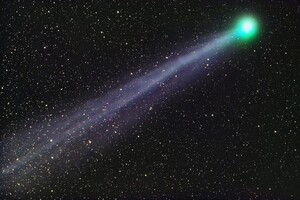The discovery will help to understand how such systems are formed.

Astronomers from the Main Astronomical Observatory of the National Academy of Sciences of Ukraine have discovered Exocomets are comets orbiting a star in another system. The scientists' article was published in the journal Astronomy and Astrophysics, according to Scientific American.
As a result of the study, astronomers used data from the TESS telescope. In addition to their own discovery, they were also able to confirm the discovery of other exocomets made during previous research.
Read also: Leonard's comet “lost” its tail while moving towards the sun
In our solar system, comets are studied as particles of the past that can reveal the history of the formation of the Earth and other planets. It is also believed that comets could bring water to our planet, which created favorable conditions for the emergence and maintenance of life.
“I think exocomets are as important as comets in our solar system. Obviously, comets have played a significant role in shaping our system. If the history of our solar system is so related to exocomets, how can we hope to understand other systems without studying their comets? ”Said Andrew Vanderberg of the Massachusetts Institute of Technology, who was not involved in the new study.
Discovered exocomets revolve around the star Beta Painter, which is 65 light years from the Sun. The star is much younger than the Sun, it is only 10-40 million years old (our star is 4.5 billion years old). It can provide astronomers with information about what happens in the early stages of planetary system formation. A giant gas planet, 11 times the size of Jupiter, revolves around Beta the Painter. In addition, the star is surrounded by a disk of debris with a diameter of 60 million kilometers.
Usually such disks are chaotic regions where giant rocks and protoplanets meet. Comets usually form in such regions. In young planetary systems, comets fly past their stars much more often, because the objects in the disk are constantly moving before they take their final shape. It was already known that two groups of comets with different properties revolve around the star. But the discovery allowed new comets to be added to objects discovered in other star systems. . Researchers have confirmed that the object is a record large – its diameter reaches 137 kilometers.




